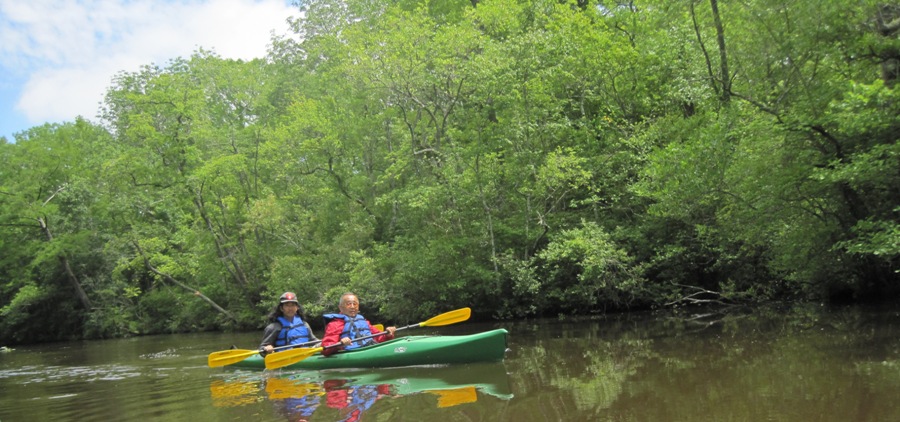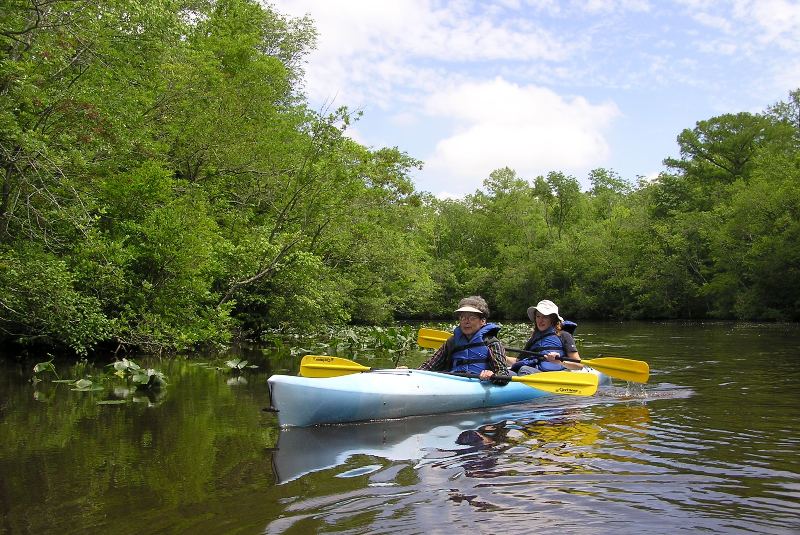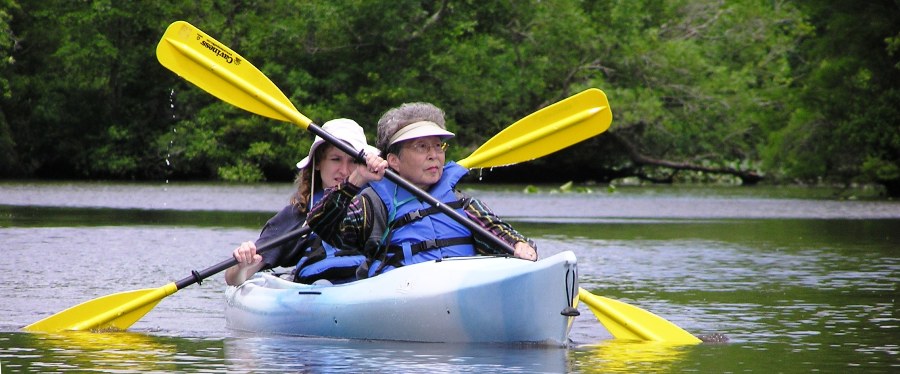We ate breakfast, packed up, then walked on the 0.7 mile
Trail of Change where we meandered through a cypress swamp.
Some of the
cypress knees had a volcano-like rim at the top rather than the rounded shape I typically see.
Our final adventure was to kayak the upper 5.4 miles of the Pocomoke River from
Porter's Crossing to Snow Hill Road (route 12). I've done this trip twice before and in my opinion, this is one of the nicest paddling trips in all of Maryland. I've boasted to Norma about this route several times and now she would finally be able to appreciate it.
The people at the Pocomoke River Canoe Company drove Norma, my parents, two recreational tandem kayaks, paddles, personal floation devices (PFDs), and me to Porter's Crossing and then helped us launch. Hazel decided to stay behind and guard the store in our absence. The first part of the trip was comprised of winding back and forth amongst the cypress trees in brown, tannic acid-filled water, similar to that which Norma and I paddled on
May 16, 2009. Unlike that trip, this one would be much easier since the waterways were much wider (but not too wide) and while we had to duck under low branches and logs, no portages were necessary.
I paired up with Dad while Norma paired up with my mom. We saw numerous cypress trees but none that were anything like those we saw a week and a half prior in
Sussex County, Delaware. Still, they were very nice and kept us out of the sun for much of the trip.
1 / 3


Dad and I.
2 / 3


Mom and Norma.
3 / 3


Kayaking.
❮
❯
As the river widened, we began seeing turtles. They became more and more numerous as we continued. I reckon I saw about thirty. Some had shells up to fourteen inches long! We also saw several spatterdock flowers, a water snake, and some
cormorants. I was a little disappointed that we didn't see any bald eagles.
Two hours after we began paddling, we were back at the canoe shop. I think the caretaker at the canoe shop was impressed that we finished a half hour faster than the typical time.
We changed into dry clothes then ate lunch under some umbrellas at a table next to
Maggie's of Snow Hill, a bookstore. Though we weren't customers, they are somehow connected with the canoe shop so we were allowed to use their table.
On the way home, Norma stopped in at another local produce market. It seems she can't get enough of those eastern shore fruits and veggies.
Back at my house, my dad, Norma, and I cleaned out the car. We vacuumed, washed, cleaned the windows, and wiped down the plastic and vinyl with Armour All. Not a tick left.
For dinner, we went to TGIF in Hanover. Good food but too noisy. Then we stopped in at Safeway to pick up dessert, which we ate at my house.
Sadly, Norma and Hazel went their separate ways, saying goodbye to my parents until their/our next visit.



